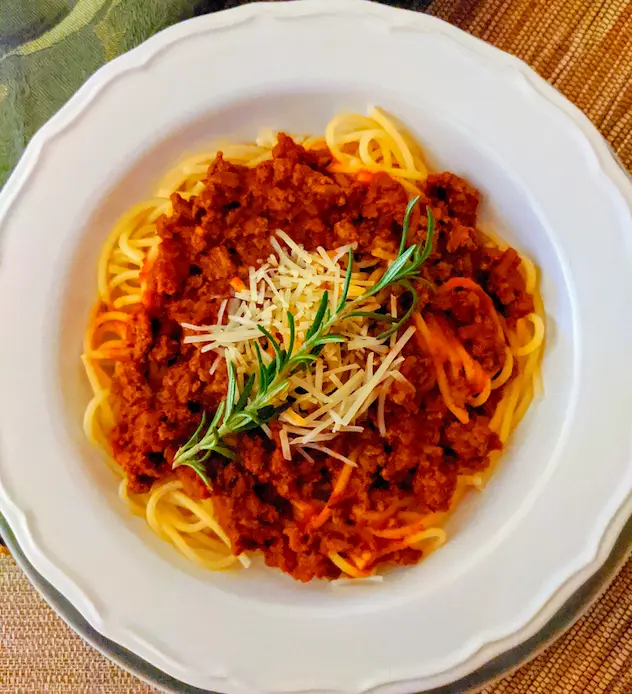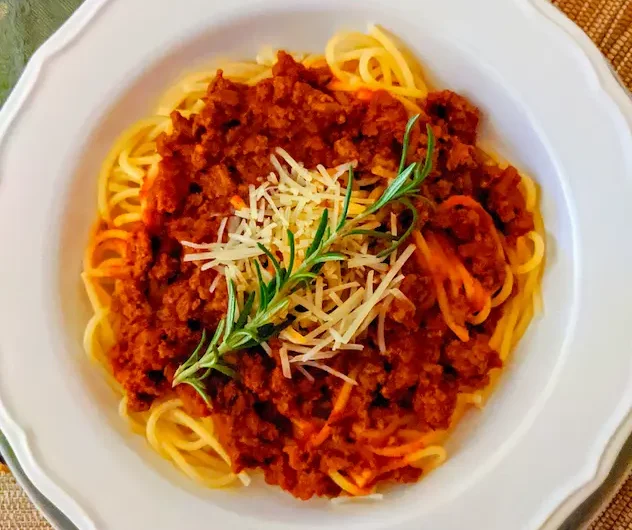When I prepare meat sauce, I often make a sizable batch to ensure there are leftovers for quick, delicious and easy meals later in the week. However, knowing how long meat sauce can last in the fridge is crucial to enjoying it safely and at its best quality. Meat sauce, when promptly stored in the refrigerator in an airtight container, has a shelf life that varies depending on specific factors such as the ingredients used and how it’s stored.
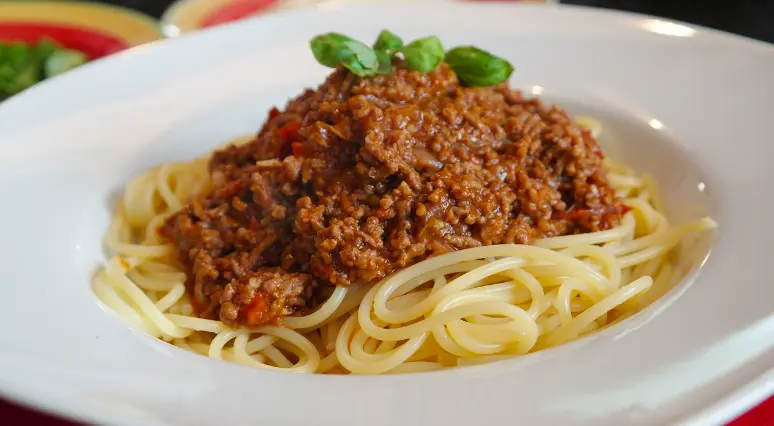
In my experience, a homemade meat sauce generally lasts between three and four days in the fridge. It’s important to refrigerate the sauce within two hours of cooking to prevent bacterial growth. The fridge temperature should be maintained at or below 40°F (4°C) to ensure the meat sauce remains safe for consumption. If I plan to keep the sauce for later use beyond a few days, freezing becomes an option to extend its life considerably, often up to several months.
The variety of the sauce also affects its shelf life. For instance, tomato-based meat sauces, like a classic Bolognese, can stay fresh for about four days when properly stored in the fridge. If the meat sauce has a different base or includes dairy products, the shelf life may differ, and typically, such sauces need to be consumed sooner.
Understanding Meat Sauce Preservation
When I consider the storage of meat sauce, my primary objective is to ensure its best quality for the longest possible time while preventing food poisoning. Knowledge about the factors that affect shelf life and the signs of spoilage is crucial to achieve this.
Factors Affecting Shelf Life
Several elements play a vital role in determining how long my meat sauce will remain edible. First and foremost, I maintain proper storage conditions: a consistent refrigerator temperature between 35°F (1°C) and 40°F (4°C), which is essential for slowing bacterial growth and preserving the sauce’s quality.
- Temperature: Above 40°F (4°C), bacteria growth accelerates.
- Airtight Containers: Exposure to air can degrade quality and hasten spoilage.
- Ingredients: A tomato-based sauce typically offers a bit of natural preservation due to its acidity.
Moreover, I am mindful of the expiration date of the meat and other ingredients I used, as these impact the final product’s longevity. Meat sauce stored according to these guidelines usually lasts in the fridge for 3 to 5 days on average.
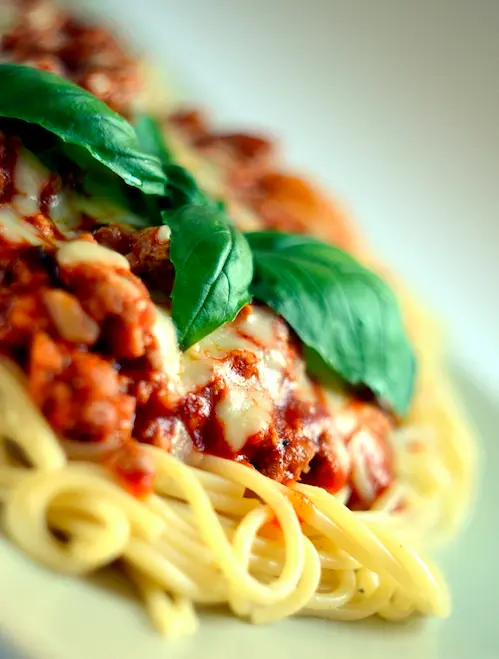
Signs of Spoilage
Understanding the signals of spoilage allows me to prevent the risk of food poisoning. Here’s what I look for:
- Odor: A sour or unpleasant smell is a clear indicator that the sauce should not be consumed.
- Mold: Any visible mold spots mean that the sauce has been compromised.
- Texture: If the sauce’s texture has changed, possibly becoming slimy, it’s time to discard it.
By staying attentive to these cues and factoring in all variables of preservation, I confidently store my meat sauce, enjoying its flavors without compromising safety or quality.
Proper Storage Methods
In my experience, ensuring that meat sauce maintains its quality and safety is all about the containment and temperature control. Here’s how I effectively refrigerate and freeze meat sauce.
Refrigerating Meat Sauce
When I place meat sauce in the refrigerator, my first step is to allow it to cool down to room temperature. This prevents condensation within the storage container, which can lead to earlier spoilage. I always use an airtight container to inhibit bacteria growth and keep other fridge odors at bay. Meat sauce stored this way typically lasts for 3 to 4 days.
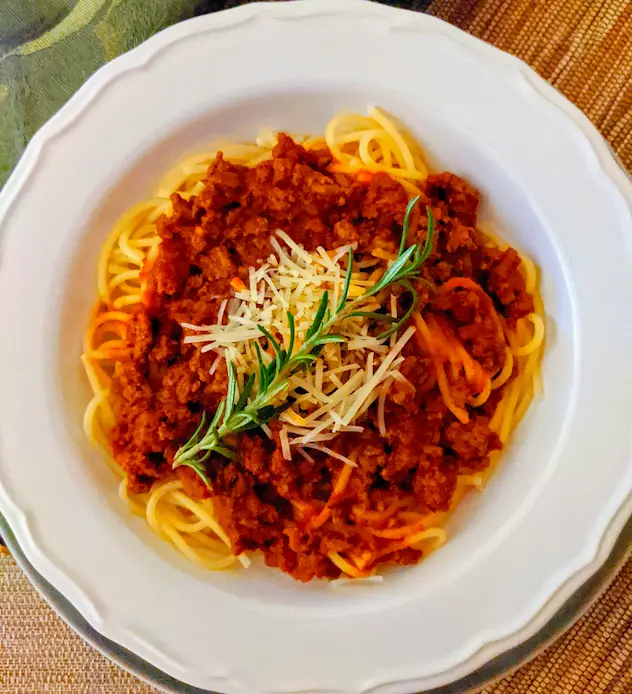
Freezing Meat Sauce
For longer preservation, I freeze meat sauce. First, I make sure to use freezer-safe containers or heavy-duty freezer bags. This protects the sauce from freezer burn, which can adversely affect flavor and texture. I label the containers with the date, because even in the freezer, I’ve found that quality is best when used within 4 to 6 months. Airtight sealing is crucial here too, to preserve the sauce’s integrity and prevent it from absorbing any off-flavors from the freezer.
Maximizing Freshness and Quality
When I store meat sauce in the fridge, I focus on two crucial factors: the containers I use and the temperature at which I keep the sauce. These practices ensure the meat sauce remains fresh and retains its quality for as long as possible.
Container Selection
For the best way to store meat sauce, I opt for glass jars or airtight containers which are not only inert but also prevent the transfer of flavors and odors. Glass is my preference because it doesn’t absorb the smells and is easier to clean, ensuring that there are no unpleasant odors from previous uses. When I transfer the sauce into the container, I ensure there’s minimal air left at the top to reduce oxidation, which can affect the flavor and freshness.
Temperature Control
It’s imperative that I maintain a consistent and appropriate temperature in the fridge, usually set below 40°F (4°C). This temperature prevents the growth of bacteria which could lead to a sour smell and potential spoilage if the sauce is stored for a long time. I always refrigerate the meat sauce within two hours of cooking to avoid the risk of bacterial proliferation at room temperature.
Meat Sauce Types and Their Shelf Life
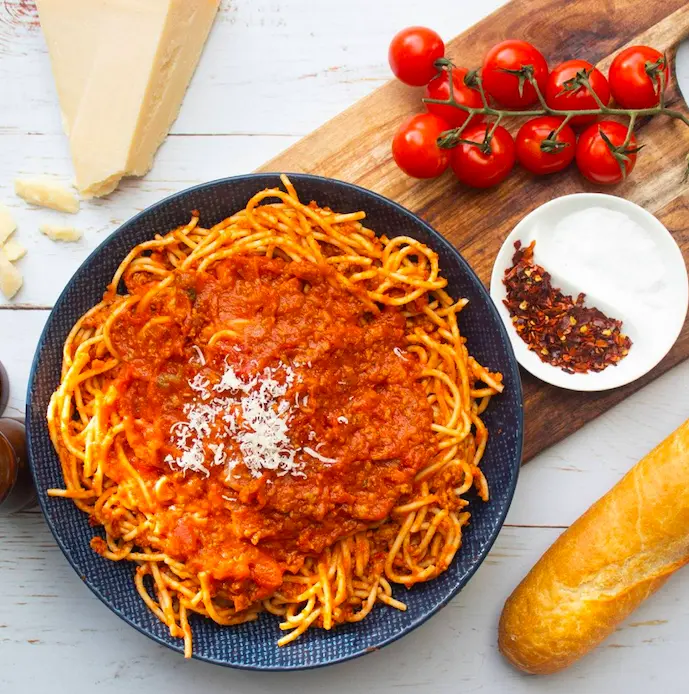
In my experience with storing meat sauces, the shelf life can significantly vary depending on the type of sauce. Both tomato-based sauces and cream-based sauces have varying levels of acidity and ingredients that affect how long they can be safely stored in the fridge.
Tomato-Based Sauces
Marinara Sauce:
- Refrigerator: Up to 7 days
- Freezer: Up to 8 months
Bolognese Sauce (a type of meat sauce within the tomato-based category):
- Refrigerator: 3 to 4 days
- Freezer: 4 to 6 months
Tomato-based sauces, such as marinara and bolognese, benefit from the natural preservatives found in tomatoes, namely acidity, which helps them last longer in the fridge. When I make homemade tomato-based meat sauces, I ensure they are stored in airtight containers to maximize their shelf life.
Cream-Based Sauces
Alfredo Sauce (a popular cream-based sauce):
- Refrigerator: 3 to 4 days
- Freezer: Do not recommend freezing as separation can occur
Cream sauces, which are more delicate due to dairy components, generally have a shorter fridge life. I’ve learned that the key to extending the freshness of homemade cream sauces, such as alfredo, is cool, consistent refrigeration, and ensuring that they’re stored in airtight containers as soon as possible after cooking.
| Variation | Taste Profile |
|---|---|
| Classic Bolognese | Rich and hearty with savory umami flavors, complemented by a subtle sweetness from the tomatoes and depth from the red wine. |
| Vegetarian Bolognese | Earthy and satisfying, with a nutty undertone from the lentils, balanced by the sweetness of the tomatoes and aromatic vegetables. |
| Turkey Bolognese | Lighter and leaner, with a milder flavor compared to traditional beef, enhanced by aromatic vegetables, herbs, and a hint of sweetness from the tomatoes. |
Serving and Reheating
When it comes to serving and reheating meat sauce, the key is to ensure that the sauce is heated to an internal temperature that is safe for consumption, while also maintaining the sauce’s flavor and texture. I’ll guide you through safe reheating practices and share tips on how to best serve the sauce for optimal taste.
Safe Reheating Practices
For safety, it’s vital to reheat meat sauce to an internal temperature of 165°F. I typically use a food thermometer to check, ensuring any potential bacteria are eliminated. Reheating should be done on the stove for even heat distribution, preferably using medium heat to avoid burning the sauce.
- Reheat on the Stove: I pour the meat sauce into a pan and warm it over medium heat, stirring occasionally.
- Avoid High Heat: To prevent scorching, I never reheat on high heat. Low to medium heat will warm the sauce evenly without altering the flavor.
- One-time Reheating: It’s important to only reheat the quantity of meat sauce that will be consumed to avoid quality deterioration from multiple reheatings.
Optimizing Taste When Serving
Maximizing flavor is just as important as safe reheating. I have a couple of techniques I rely on to ensure that the meat sauce tastes as good, if not better, than when it was first prepared.
- Add Extra Flavor: If the sauce feels like it has lost some flavors, I like to add a pinch of seasoning, fresh herbs, or a splash of olive oil just before serving. This brings back the vibrancy of the sauce’s taste.
- Serve at Medium-High Heat: After reheating, I serve the meat sauce hot, often over freshly cooked pasta, to allow the warmth to enhance the dish’s aroma and flavors.
By carefully reheating on medium heat and incorporating extra flavor before serving, I enjoy my meat sauce in a way that is both safe and delicious.
Creative Uses for Leftover Sauce
When I find myself with leftover sauce, I see it as an opportunity to create something new and exciting. My fridge is often the starting point for delicious meals that revive and transform plain dishes into something special.
Revitalizing Plain Pasta
Leftover pasta sauce is my go-to for bringing life back to plain pasta. I typically toss the pasta directly into the sauce and reheat it slowly on the stove, allowing the pasta to absorb the flavors. If my sauce is particularly rich, I may add a splash of pasta water to thin it out a bit, ensuring every strand is perfectly coated.
Innovative Meal Ideas
Leftover spaghetti sauce can do more than top pasta; it’s a versatile ingredient that can inspire a range of meals. For instance, mixing it with cooked chicken, cheese, and pasta transforms it into a comforting baked ziti. If I have leftover pizza sauce, it becomes the base for a quick pizza bagel or a savory meatball sub. Here’s a breakdown of how I get creative with leftover sauce:
-
Pizza: Spreading the sauce on a pizza dough and simply adding mozzarella and any other desired toppings can create a quick homemade pizza.
-
Stuffed Peppers: Combining the sauce with rice and stuffing it into bell peppers, then baking until they’re tender, makes for a satisfying and simple dinner.
-
Casserole: I often create a casserole by layering the sauce with pasta, cheese, and perhaps additional vegetables, then baking it until bubbly.
By viewing leftover sauce as a blank canvas, I find numerous ways to enhance my meals and reduce food waste.
Tips for Large Batches and Future Use
When handling large amounts of meat sauce, whether it’s my best homemade recipe or an entire jar from the store, I always consider the shelf life and best practices to maximize freshness for future use. Proper storage can extend the life of the sauce to a large extent.
Batch Cooking Meat Sauce
When cooking meat sauce in bulk, I make sure to not cook more than I can store or consume within a reasonable time frame. For optimal freshness, tomato-based meat sauces should be consumed within 5-7 days when refrigerated, while cream-based sauces typically last 3-5 days. I label my batches with the cooking date for easy reference.
Storing for Later Use
For storing large batches of meat sauce, I:
- Split the amount: Divide the batch into smaller portions to avoid repeatedly reheating the entire quantity which can spoil the sauce.
- Refrigerate promptly: Refrigerate within two hours of cooking to prevent bacterial growth.
- Freeze for longevity: If I won’t use the sauce within the refrigerator’s time frame, I freeze it. Tomato-based meat sauce can be frozen for up to 6-8 months. I use airtight containers or heavy-duty freezer bags, squeezing out excess air before sealing.
By following these steps, I ensure my meat sauce stays safe for consumption and retains its flavor, ready to be enjoyed at a moment’s notice.
Common Myths and Questions
When discussing the shelf life of homemade meat sauce in the fridge, I frequently encounter a range of questions and misconceptions. Here are some common ones:
-
Myth: Meat sauce can last 2-3 weeks in the fridge.
Fact: Based on food safety experts, cooked meat sauce should be eaten within 3-4 days once stored in the refrigerator in covered airtight containers. -
Question: Is there a precise answer for how long meat sauce lasts?
Answer: While 3-4 days is the recommended timeframe, always use your senses to check for spoilage signs.
Following best practices is paramount for maintaining safety and quality. Here’s what I’ve gathered from reliable sources like the Stack Exchange Network:
- Refrigerate Promptly: Don’t leave meat sauce out at room temperature for more than 2 hours.
- Store Properly: Use airtight containers to keep out moisture and other contaminants.
- Avoid Repeated Reheating: It increases the risk of bacterial growth.
In Q&A communities, I often remind people to label their sauce with a date before storing it. This helps keep track of its freshness.
Lastly, misconceptions about the shelf life of homemade pasta sauce also exist. Many assume it’s similar to meat sauce, but its high acidity may give it a slightly longer fridge life. However, the 3-4 days rule is a safe bet for homemade sauces with meat.
Advanced Meat Sauce Techniques
In my experience, taking meat sauce to another level hinges on two pivotal factors: enhancing its flavor profiles and extending its shelf life through innovative methods. Achieving these can transform a simple sauce into a culinary masterpiece.
Enhancing Flavor Profiles
To enhance the flavor profile of a meat sauce, I always recommend starting with high-quality ingredients. Fresh tomatoes and fresh basil are my go-to choices for their aromatic qualities. Here, the intensity of flavor arises from how these ingredients are prepared:
- Chopping Technique: A fine dice of fresh tomatoes helps release the juices and incorporate the flavors more thoroughly throughout the sauce.
- Herb Infusion: By adding whole basil leaves during the initial stages of cooking and removing them before serving, I infuse the sauce with an unmistakable herbaceous note.
Adding a small pinch of red pepper flakes can introduce a subtle heat that carries the other flavors without overpowering the dish. Lastly, a generous grating of parmesan cheese towards the end of cooking not only thickens the sauce but seals in a nutty, umami depth that’s irresistible in hearty meat sauces.
Extending Shelf Life Innovatively
The key to extending the shelf life lies in both preparation and storage. I always cool my sauces rapidly to minimize bacteria growth. Here’s my process:
- Cooling: Transfer the sauce into a shallow dish to cool down quickly to the optimal storage temperature.
- Airtight Storage: Pour the cooled sauce into airtight containers, which preserves its freshness and extends its fridge life.
To further ensure the sauce maintains its quality, I often freeze portions of it. Freezing meat sauce in individual servings not only makes it convenient for future meals, but also helps in retaining its flavor and texture for much longer – up to several months. Remember, the key is to freeze the sauce promptly after cooking and cooling.
Frequently Asked Questions
In this section, I aim to provide clear and concise answers to common questions regarding the refrigeration of meat sauces, emphasizing safety and quality.
What is the safe storage duration for cooked pasta with sauce in the refrigerator?
For cooked pasta mixed with meat sauce, I recommend storing it in the fridge for no more than 3 to 4 days to maintain its taste and ensure food safety.
Is meat sauce still edible after being stored in the fridge for a week?
Meat sauce stored in the refrigerator for a week is generally not recommended for consumption due to the increased risk of spoilage and foodborne illness.
How long can homemade sauces be kept refrigerated before they spoil?
Homemade meat sauces should ideally be consumed within 3 to 4 days when kept in the refrigerator, although tomato-based sauces with natural preservatives may last between 5-7 days.
What are the guidelines for refrigerating homemade spaghetti sauce?
For homemade spaghetti sauce, the guideline is to refrigerate promptly in airtight containers, where it will keep for about 3 to 4 days for optimal quality.
Can Bolognese sauce be consumed safely after 7 days of refrigeration?
Consuming Bolognese sauce after 7 days of refrigeration is not advisable, as it is best consumed within 4 days for both safety and quality.
What’s the maximum time meat sauce can remain good for consumption in the fridge?
The maximum time meat sauce should remain in the fridge for safe consumption is generally up to 4 days, after which the risk of food spoilage significantly increases.
Family Bolognese sauce
Course: DinnerCuisine: ItalianDifficulty: Easy6
servings20
minutes3
hoursThis authentic Italian Bolognese sauce is rich, hearty, and full of flavor. Enjoy it with your favorite pasta for a comforting and satisfying meal!
Ingredients
2 tablespoons olive oil
1 onion, finely chopped
2 cloves garlic, minced
2 carrots, finely chopped
2 celery stalks, finely chopped
1 pound (500g) ground beef
1/2 pound (250g) ground pork
1/2 cup dry white wine
1 cup whole milk
1 cup beef or chicken broth
2 tablespoons tomato paste
1 can (14 oz) crushed tomatoes
Salt and pepper to taste
1/4 teaspoon nutmeg (optional)
Fresh basil leaves, chopped, for garnish
Grated Parmesan cheese, for serving
Cooked pasta, such as tagliatelle or spaghetti, for serving
Directions
- Heat the olive oil in a large skillet or Dutch oven over medium heat. Add the chopped onion, garlic, carrots, and celery. Cook until softened, about 5-7 minutes.
- Add the ground beef and pork to the skillet. Cook, breaking up the meat with a wooden spoon, until browned and no longer pink.
- Pour in the white wine and let it simmer until it has evaporated, about 5 minutes.
- Stir in the milk and let it simmer until it has reduced, about 10 minutes.
- Add the beef or chicken broth, tomato paste, crushed tomatoes, salt, pepper, and nutmeg (if using). Stir to combine.
- Reduce the heat to low and let the sauce simmer gently, uncovered, stirring occasionally, for about 2-3 hours, or until thickened to your desired consistency.
- Taste and adjust seasoning if needed.
- Serve the Bolognese sauce hot over cooked pasta, garnished with chopped fresh basil leaves and grated Parmesan cheese.
Notes
- You can omit the pork and add ground beef in its place. Also, ground turkey can be used in place of ground beef.
